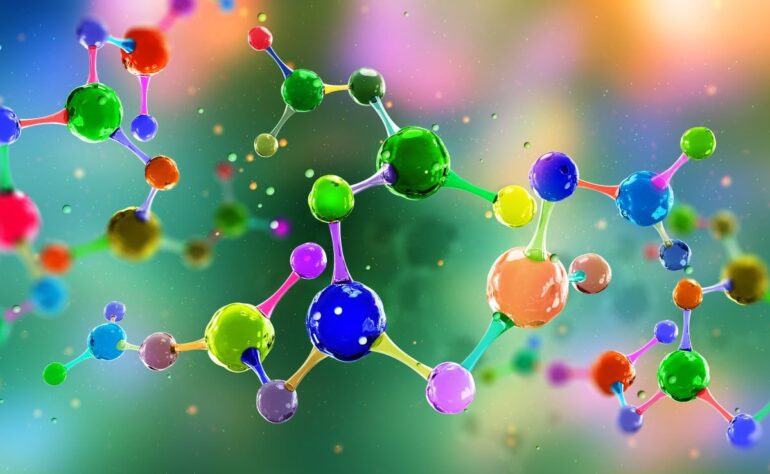TL;DR:
- MIT researchers have developed Molecular Grammar, an advanced machine learning framework.
- Molecular Grammar simultaneously predicts molecular properties and generates new molecules using minimal training data.
- This innovative approach accelerates the discovery of drugs and advances material development.
- The model learns the language of molecules and applies it to a compact dataset, uncovering similarities and governing laws.
- Molecular Grammar outperforms traditional machine learning models with small datasets.
- It is applicable to graph-based datasets and supports both regression and classification approaches.
- Remarkable results were achieved by reducing the training dataset size.
- Molecular Grammar has implications for various domains, including predicting physical properties.
- The research team aims to extend the model to 3D molecules and polymers.
Main AI News:
In the pursuit of groundbreaking scientific discoveries, the power of Machine Learning (ML) algorithms cannot be underestimated. Traditionally, ML algorithms relied on vast amounts of training data to predict molecular properties and generate new molecules. However, this approach posed a significant challenge due to the scarcity of available data.
Addressing this limitation head-on, a team of brilliant researchers from the Massachusetts Institute of Technology (MIT) has devised a remarkable solution. They have developed an innovative ML framework that harnesses the potential of Deep Learning to simultaneously predict molecular properties and generate novel molecules, all with the aid of a remarkably small training dataset.
The primary objective of these visionary researchers is to accelerate the discovery of new drugs and advance material development. To achieve this, the MIT team embarked on a mission to unlock the secrets of molecular properties prediction using a limited dataset. Their pioneering breakthrough came in the form of a sophisticated ML model known as “Molecular Grammar” – a transformative language understood exclusively by molecules themselves.
The genius behind Molecular Grammar lies in its ability to extract invaluable insights from a compact dataset, making it a highly practical and efficient solution. By leveraging the full extent of available information and grammatical patterns within the small dataset, Molecular Grammar uncovers the intricate similarities between molecules with comparable structures. Through the power of Reinforcement Learning, the system deciphers the underlying laws governing molecular similarity, thereby bringing the team closer to their ultimate goal.
Molecular Grammar encompasses two pivotal components: the metagrammar and the hierarchical approach. Together, these elements form a dynamic framework that supersedes the performance of numerous ML models. Even when pitted against datasets that traditionally fueled ML models in predicting molecular properties, Molecular Grammar shines as a formidable technique. Remarkably, it also extends its prowess to graph-based datasets, making it applicable to a wide range of regression and classification approaches.
In their relentless pursuit of scientific progress, the research team boldly experimented with the training dataset. By reducing it to a mere half of its original size, they achieved astonishingly superior results – a remarkable feat that stands as a testament to their ingenuity.
[Sponsored] Boost Your Personal Brand with Taplio: The Ultimate AI-Powered LinkedIn Tool
Discover the revolutionary all-in-one AI-powered tool designed to propel your personal brand to new heights on LinkedIn. Taplio empowers professionals like you to create compelling LinkedIn content up to 10 times faster, while providing robust scheduling capabilities, in-depth analytics, and unparalleled engagement opportunities. Try Taplio today and unleash the true potential of your personal brand – for free!
The applications of this groundbreaking method span diverse domains, including the prediction of physical properties such as glass transition temperature. As the MIT research team looks to the future, they are eager to extend the capabilities of their molecular grammar model to three-dimensional molecules and polymers. With Molecular Grammar as their guiding light, they are poised to unlock new frontiers of molecular discovery and propel predictive capabilities to unprecedented heights.
Conclusion:
The development of Molecular Grammar by MIT researchers represents a significant breakthrough in the field of drug discovery and material development. By effectively utilizing minimal training data, this advanced machine learning framework offers a powerful solution to predict molecular properties and generate new molecules. Its ability to unlock the language of molecules and uncover hidden similarities opens new avenues for accelerated research and innovation. With its superior performance and potential application in diverse domains, Molecular Grammar is poised to revolutionize the market by expediting the discovery of drugs and materials, ultimately driving advancements and delivering transformative solutions.

